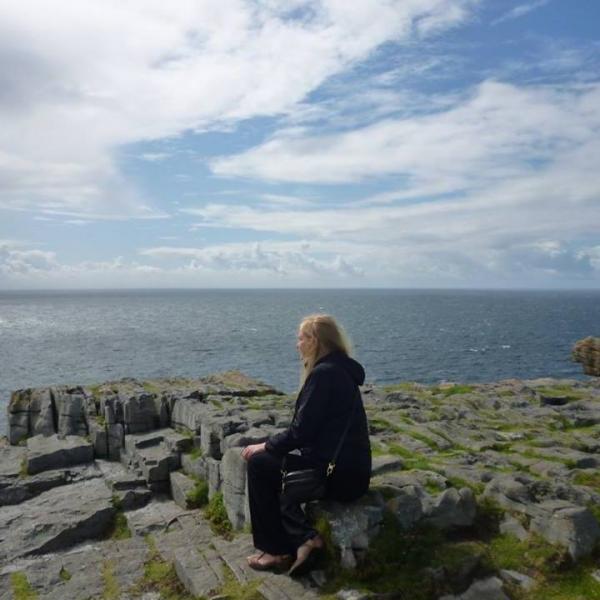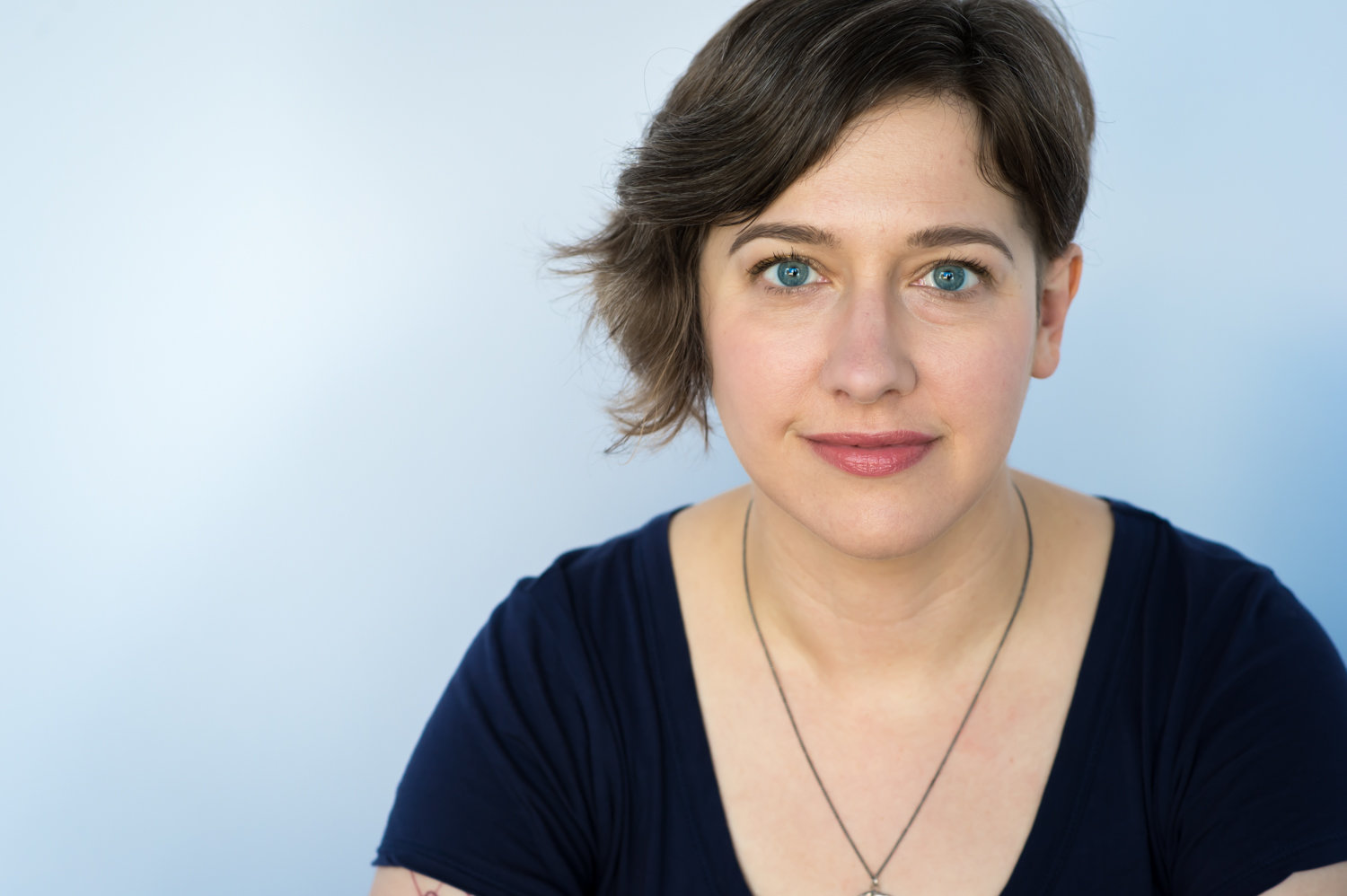As readers, we need to actively seek out and challenge reading habits that have been shaped by the gatekeepers of the publishing industry. We talked to writer Nikki Reimer and librarian Mary Duffy about their resolutions to read.
Are you aware of your reading habits? Now, on social media, writers and readers are resolving to read more widely and diversely, as we see through hashtags like #readwomen, #95Books or #weneeddiversebooks. Some track their reading by tweeting titles while others share recommendations. Awareness is growing in the literary world that we, as readers, need to actively seek out and challenge our reading habits that may or may not have been shaped by the gatekeepers of the publishing industry. We talked to writer Nikki Reimer and librarian Mary Duffy about their resolutions to read.
Nikki Reimer and the 95 Book Challenge
Nikki Reimer’s poetry has appeared in anthologies from New York to Winnipeg, in journals online and off, and once on digital billboards in the city of Calgary. A writer concerned with emotional ecology, Reimer has published two books—DOWNVERSE and [sic], which was shortlisted for the Lampert Award—chapbooks, criticism and essays. She lives in Calgary, where she works in digital communications for higher education, is a founding director of the Chris Reimer Legacy Fund Society, and is a host for The Dinner Party.
What reading resolutions did you make last year?
In 2015 (as in 2014 and various years in the recent past) I’ve participated in the Jonathan Ball / ryan fitzpatrick #95Books reading challenge, which you can read about here.
2014 was the first year I managed to surpass the 95 books challenge. Having taken inspiration from VIDA and CWILA’s gender counts, I crunched some numbers and discovered that in 2014 I’d read 50% women to 48% men (and 2% anthologies).
Other 2014 stats:
-
14% of books were by persons of colour; 83% were by non-persons of colour
-
16% of books were by LGBTQ-identified persons; 82% were by non-LGBTQ-identified persons, or were unknown to me
-
2% of books were by First Nations, and in fact, the same First Nations author
So the reading resolutions I gave myself for 2015, in addition to reading 95 books or more, were: More diversity. Conscious diversity. Seek out more indigenous writers.
How did you track the books you read?
A numbered list in Evernote, synched to my phone and computer for easy updating. I also tweeted / Facebook-posted the list as I went along because I enjoyed seeing what books my colleagues were dipping into. And frankly in a pretty shitty year personally, it was gratifying to succeed at something, even if that something was reading more books than many of my friends. How neoliberal!
I set up a basic excel spreadsheet to track genre, gender, sexuality, race, indigenous. These categories, of course, have some problems associated with them—there is the real possibility of erasing someone’s identity for example, and I have never taken a statistics course, so I’m certain a statistician could point out flaws in my methodology. I started out trying to track publishers, but I put together my spreadsheet at the end of the year, started doing the research, realized it was unnecessary unpaid labour, and quit.
Did a year of tracking what you read lead to any realizations about your habits or choices of books?
Not really. Sometimes I picked up books at launches and reading series. Sometimes I binge-shopped. Some books were at the recommendation or rave of a friend or acquaintance. I’m not an academic so I have the luxury of reading what I want, when I want.
How did you achieve your goal? Was there a strategy involved?
I made my numerical goal and improved on my diversity over last year:
-
62% women to 32% men, 5% co-authored or anthologies, and 1% trans or non-binary
-
60% poetry, 22% non-fiction, 16% fiction, 1% short fiction and 1% graphic work.
-
77% heterosexual, 18% LGBTQ, 5% unknown to me
-
76% white, 24% POC
-
92% non-Indigenous, 8% Indigenous
-
60% Canadian, 27% American, 4% European, 3% bi-national, 3% East Asian, 2% Latin American, 1% African.
I was able to achieve the numerical goal partly through unfortunate happenstance, as I slipped on a plyometrics box on January 25 and broke my collarbone, putting me on the couch for a good four weeks. Then on December 2 I had minor surgery and was again a couch-resident while I recovered. I may not have made it to 117 books without these forced rest periods. And I did read 60% poetry. People think poetry books are a faster read than fiction because they have less pages, but they forget that poetry is usually denser, so you read slower.
I definitely made conscious choices due to my resolutions to read for wider diversity. I think as a writer it is especially important to read outside your own demographic.
What top three books would you recommend in the theme of your resolution?
-
She of the Mountain by Vivek Shriya
-
The BreakBeat Poets: New American Poetry in the Age of Hip-Hop. Edited by Kevin Coval, Quraysh Ali Lansana, Nate Marshall
-
Red Skin, White Masks: Rejecting the Colonial Politics of Recognition by Glen Coulthard
What reading resolution do you have for 2016?
Continue to decolonize my reading and continue to support my contemporaries. Also, judging by my credit card statement, I should probably spend more time at the library and less time at my local indie bookstores.
Mary Duffy of Book Talks Book Club and the World Reading Challenge

Mary Duffy is the co-host of the open Book Talks book club at the Vancouver Public Library Britannia branch in Vancouver, BC. She is also active in Vancouver’s literary community as a board member of Pandora’s Collective and creative writer whose work has been featured in numerous publications and anthologies.
What reading resolutions did you make and why?
To “read around the world”.
This year, we were inspired by writer, blogger and editor of Blueprint Review, Dorothee Lang, to take this reading journey. Dorothee posts many such challenges on her blog including the World Reading Challenge—7 Continents , 7 billion people , 7 books.
How do you choose the books you read?
The group has a session once a year—and any member of the public can join in—where participants ‘book talk’—talk about a book or books they would like the group to read and discuss. We attempt to ‘sell’ our book to the full group. We compile an annotated list and then folks email their votes. All very democratic!
Did a year of reading internationally bring about any realizations regarding your book choices?
We have only been involved in this particular challenge since July but definitely—yes! We’ve read a mixture of fiction and non-fiction as always.
One realization was that we did not necessarily need to travel to seven continents to expand our world view. Some of our most memorable journeys were from books set right here in BC such as Wayson Choy’s memoir, Paper Shadows, which gave us all new insight and appreciation into Vancouver’s Chinatown and Strathcona neighbourhoods.
We just read David Suzuki’s autobiography where we followed not just his travels to Haida Gwaii, the Amazon Rainforests and Papua New Guinea but also his odyssey as an environmentalist learning from so many First Nations peoples and of course his life journey.
Upcoming, we’ll also be reading Ru by Kim Thúy, This Changes Everything: Capitalism vs the Climate by Naomi Klein and Medicine Walk by Richard Wagamese—and these Canadian writers are sure to bring us to new places and ideas. Also, I get many other realizations/fresh perspectives from others who are part of the group who are from other countries or who have travelled more than I have. .
What top three books would you recommend on the topic of your resolution?
Too soon to choose the top three—but my personal favourite so far was Purple Hibiscus by Nigerian writer, Chimamanda Ngozi Adichie.
Told from the point of view of Kambili who is fifteen when the novel opens we experience the brutality of a dictatorship both at the country and the paternal level. We are with her every step of the way as she becomes a strong independent young lady.
What reading resolution do you have personally for this year?
I’m a librarian—I currently work with teens but I used to be a children’s librarian who did storytime and got to read so many beautiful picture books to children and families as part of my daily routine. In 2016, I resolve to allow myself to indulge in reading more beautiful picture books such as Some Things I’ve Lost by Cybèle Young where everyday objects are transformed into inventive paper sculptures and I resolve to share these books with children, teens and adults—anyone who will look and listen!
What is your reading resolution? Tweet us @RoomMagazine to let us know!














